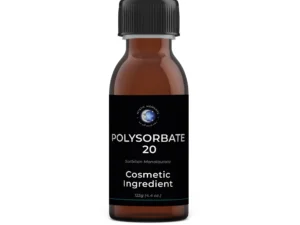Description
Sodium Lauryl Ether Sulfate (SLES): Decoding the Bubbles
Sodium Lauryl Ether Sulfate (SLES) is a ubiquitous ingredient found in countless household and personal care products. From your shampoo to your dish soap, the chances are high that SLES is contributing to its cleaning power. But, what exactly is SLES, and why is it so widely used? Let’s dive into the world of this soapy surfactant.
What is SLES? A Surfactant’s Role:
SLES is a surfactant, a type of chemical compound that reduces the surface tension between two liquids (like water and oil) or between a liquid and a solid. This property is crucial for cleaning because it allows water to spread and penetrate more effectively, lifting dirt, grime, and oil away from surfaces. Think of it as a middleman that connects water to the grease and helps wash it away.
Chemically, SLES is an ethoxylated alcohol sulfate. This means that it’s derived from fatty alcohols, typically from coconut oil or palm kernel oil, which are then reacted with ethylene oxide. This ethoxylation process gives SLES its unique properties, including its ability to create rich, stable lather.
Why is SLES So Popular?
The popularity of SLES stems from several key advantages:
- Effective Cleaning: Its potent surfactant properties make it highly effective at removing dirt, grease, and oil.
- Excellent Foaming: SLES generates abundant and stable foam, a quality many consumers associate with effective cleaning. While foam doesn’t necessarily equate to better cleaning, it contributes to the user experience.
- Cost-Effective: SLES is relatively inexpensive to produce, making it an affordable option for manufacturers.
- Versatile Applications: It’s readily soluble in water and compatible with a wide range of other ingredients, simplifying its use in various formulations.
Where Will You Find SLES?
Given its properties, you’ll find SLES in a vast array of products, including:
- Shampoos and Body Washes: For cleansing hair and skin.
- Soaps and Hand Washes: For removing dirt and germs.
- Dishwashing Liquids: For cutting through grease and food residue.
- Laundry Detergents: For washing clothes.
- Bath Products (Bubble Baths): For creating rich and frothy bubbles.
- Toothpastes: As a foaming agent.
SLES and Safety Concerns: Addressing the Controversy
SLES has been surrounded by some controversy regarding potential health effects. Here’s a balanced look at the concerns and the current scientific consensus:
- Irritation: SLES can be irritating to the skin and eyes, especially in high concentrations or with prolonged exposure. This is true of many surfactants. However, irritation levels can vary depending on the formulation, concentration, and individual sensitivity.
- Contamination with 1,4-Dioxane: A potential byproduct of the ethoxylation process used to manufacture SLES is 1,4-dioxane, a possible carcinogen. However, reputable manufacturers take steps to minimize or eliminate this contaminant through purification processes. Regulatory agencies also set limits for 1,4-dioxane levels in consumer products.
- Environmental Concerns: As with many chemicals, the environmental impact of SLES production and disposal is a valid concern. Biodegradability is a factor to consider, and efforts are being made to develop more sustainable alternatives.
The Verdict: Safe for Use, with Caveats
The scientific consensus is that SLES is generally safe for use in consumer products when formulated and used appropriately. Regulatory bodies like the Cosmetic Ingredient Review (CIR) Expert Panel and the European Commission’s Scientific Committee on Consumer Safety (SCCS) have reviewed the safety data and have concluded that SLES is safe when used at recommended concentrations.
However, it’s essential to be mindful of potential irritation, especially for individuals with sensitive skin. Look for products with lower concentrations of SLES or those formulated with soothing ingredients.
Looking to the Future: Alternatives and Informed Choices
As consumer demand for more natural and environmentally friendly products continues to grow, alternatives to SLES are becoming increasingly popular. These include:
- Sodium Coco Sulfate (SCS): Derived from coconut oil and considered less irritating than SLES.
- Coco Glucoside: A non-ionic surfactant derived from coconut and corn sugar.
- Decyl Glucoside: Another gentle surfactant derived from coconut oil and cornstarch.
By understanding what SLES is, how it works, and the potential concerns surrounding it, consumers can make informed choices about the products they use and opt for formulations that align with their individual needs and preferences. The key lies in informed decision-making and choosing products from reputable brands that prioritize safety and quality.










Reviews
There are no reviews yet.